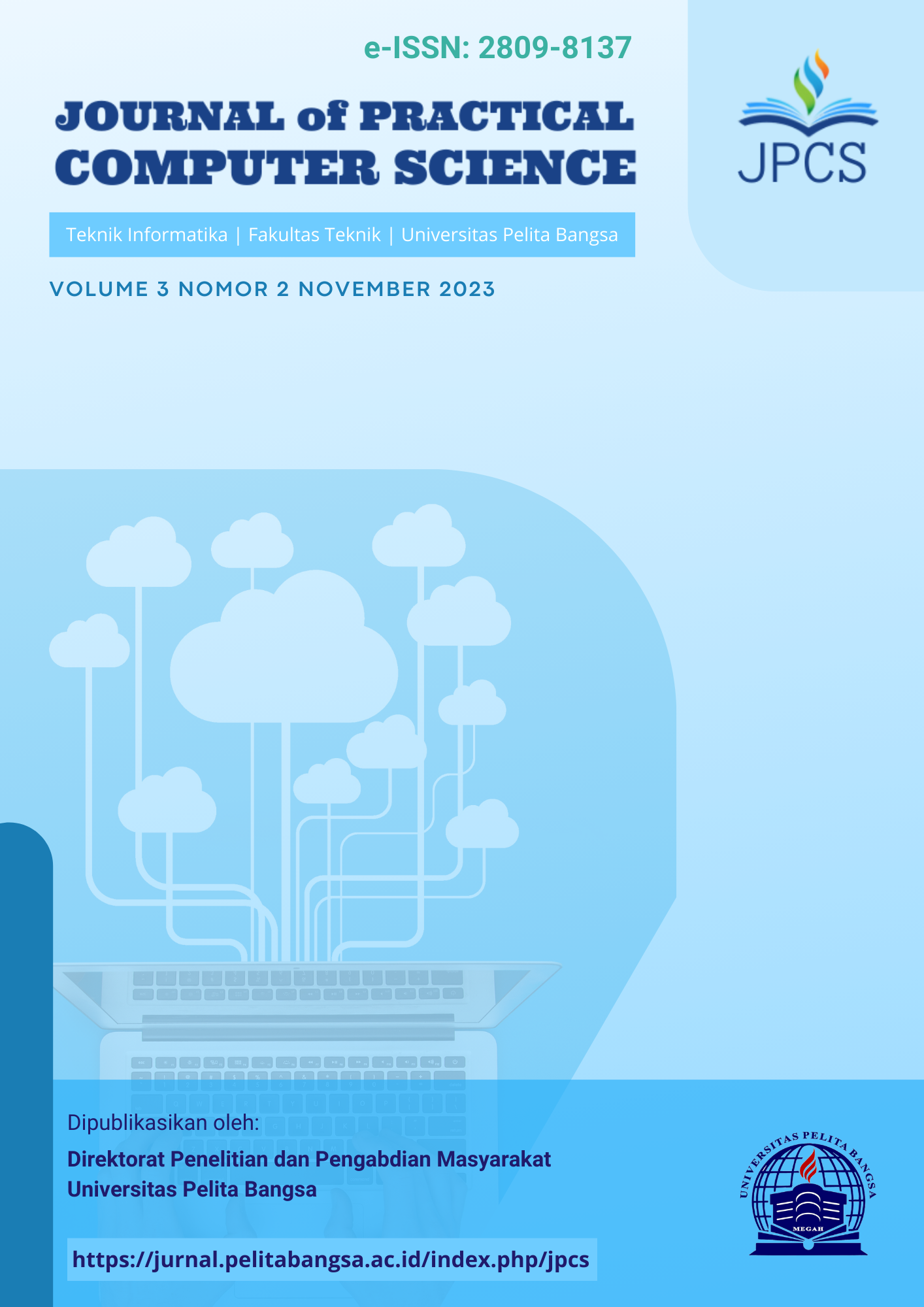Sistem Informasi Geospasial Penerima Bantuan Sosial Disabilitas Menggunakan Klasterisasi Fuzzy K-Means
DOI:
https://doi.org/10.37366/jpcs.v3i2.2555Keywords:
Umur, Sistem Informasi Geospasial, Fuzzy, K-Means, QGISAbstract
The data collection process for recipients of disability social assistance at Dinas Sosial has been going well, but the existing dataset is still in the form of raw data that has not been analyzed for the importance of the Dinas Sosial or Cirebon Satu data. The purpose of this study is to design a Geospatial Information System that can help to analyze, classify, and visualize spatial data from recipients of disability social assistance based on age. The methods used are fuzzy and k-means methods. Fuzzy is a method that can be used to group the age of recipients of disability social assistance and find out the degree of membership. The use of the k-means method is one method that is suitable for use in age clustering. Age will be grouped into three clusters, namely cluster 1 (Young), cluster 2 (Middle-Aged) and cluster 3 (Old). The results of this research are in the form of dataset analysis using the fuzzy k-means method in Microsoft Excel, map analysis in QGIS and maps in html format. After testing, the clustering results of fuzzy and k-means methods carried out in two iterations are "SAME". The results of map visualization are also good. The conclusion of this study is that the Geospatial Information System runs well and can be used to assist Dinas Sosial and for the importance of Cirebon Satu Data
Downloads
References
Badan Pusat Statistik. (2022, Juli 15). Profil Kemiskinan Di Indonesia Maret 2022. Berita Resmi Statistik. https://www.bps.go.id/pressrelease/2022/07/15/1930/persentase-penduduk-miskin-maret-2022-turun-menjadi-9-54-persen.html
Davvaz, B., Mukhlash, I., & Soleha, S. (2021). Himpunan Fuzzy dan Rough Sets. Limits: Journal of Mathematics and Its Applications, 18(1), 79. https://doi.org/10.12962/limits.v18i1.7705
Hasymi, M. A., Faisol, A., & Ariwibisono, F. X. (2021). Sistem Informasi Geografis Pemetaan Warga Kurang Mampu Di Kelurahan Karangbesuki Menggunakan Metode K-Means Clustering. Jurnal Mahasiswa Teknik Informatika, 5, 284–290.
Hutagalung, J., & Sonata, F. (2021). Penerapan Metode K-Means Untuk Menganalisis Minat Nasabah. JURNAL MEDIA INFORMATIKA BUDIDARMA, 5(3), 1187. https://doi.org/10.30865/mib.v5i3.3113
J. Rindengan, A., & A.R. Langi, Y. (2019). Sistem Fuzzy (8 ed., Vol. 7). Patra Media Grafindo.
Prasetyo Tarigan, D., Wantoro, A., & Setiawansyah. (2020). Sistem Pendukung Keputusan Pemberian Kredit Mobil Dengan Fuzzy Tsukamoto (Studi Kasus : PT Clipan Finance). Telefortech, 1, 32–37.
Undang-Undang Republik Indonesia Nomor 8 Tahun 2016, Pub. L. No. 8 (2016).
Putri, W., & Afdal, M. (2023). Application Of The K-Means Algorithm For Data Grouping Persons With Disabilities In Rokan Hilir District. Indonesian Journal of Informatic Research and Software Engineering, 3, 30–38.
Salendah, J., Kalele, P., Tulenan, A., Reynaldo Joshua, S., & Sam Ratulangi, U. (2022). Penentuan Beasiswa Dengan Metode Fuzzy Tsukamoto Berbasis Web Scholarship Determination Using Web Based Fuzzy Tsukamoto Method (Nomor 2).
Sholihah, I. (2016). Kebijakan Baru: Jaminan Pemenuhan Hak Bagi Penyandang Disabilitas (Vol. 2, Nomor 02). Kesejahteraan Sosial.
Sitinjak, D. K., Sari, B. N., & Maulana, I. (2022). Clustering Daerah Penyumbang Sampah Berdasarkan Provinsi di Indonesia Menggunakan Algoritma K-Means. Jurnal Ilmiah Wahana Pendidikan, 8(16), 137–146.
Solichin, A., & Khairunnisa, K. (2020). Klasterisasi Persebaran Virus Corona (Covid-19) Di DKI Jakarta Menggunakan Metode K-Means. Fountain of Informatics Journal, 5(2), 52. https://doi.org/10.21111/fij.v5i2.4905
Sutejo, D., Agus Pranoto, Y., & Zulfia Zahro, H. (2020). Sistem Informasi Geografis Pengelompokan Tingkat Kriminalitas Kota Malang Menggunakan Metode K-Means. Jurnal Mahasiswa Teknik Informatika, 4, 356–363.
Tanty, Serasi Ginting, B., & Simanjuntak, M. (2021). Pengelompokan Penyakit Pada Pasien Berdasarkan Usia Dengan Metode K-Means Clustering (Studi Kasus : Puskesmas Bahorok). ALGORITMA: Jurnal Ilmu Komputer dan Informatika, 5, 88–99.
Peraturan Wali Kota Cirebon Nomor 22 Tahun 2021, Pub. L. No. 22 (2021).
Downloads
Published
How to Cite
Issue
Section
License
Copyright (c) 2023 Journal of Practical Computer Science

This work is licensed under a Creative Commons Attribution-ShareAlike 4.0 International License.


.png)





